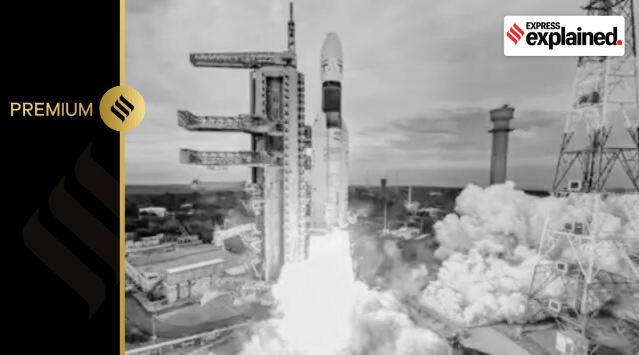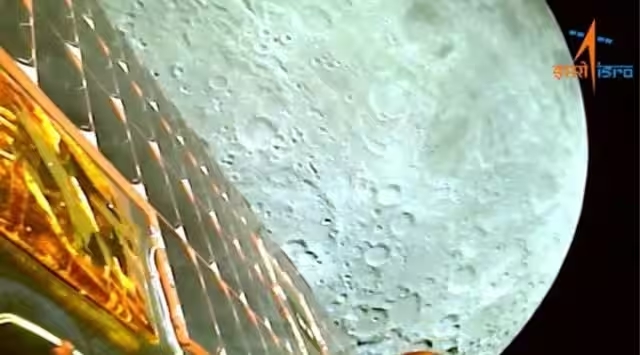How the current lunar missions differ from the last moon rush
Over five decades after the first lunar missions race, many countries are planning expeditions to the moon. However, the motivations and purposes of the current rush are very different from the Cold War era competition.
 Chandrayaan-3 is already knocking on the Moon's doors, scheduled to descend on its surface on August 23 or 24.
Chandrayaan-3 is already knocking on the Moon's doors, scheduled to descend on its surface on August 23 or 24. The moon is bracing to deal with a crowd in a few days’ time. Chandrayaan-3 is already knocking on its doors, scheduled to descend on its surface on August 23 or 24. Russia’s Luna 25 spacecraft is preparing to begin its journey later this week, and will make a touchdown around the same time as Chandrayaan-3. Japan’s SLIM (Smart Lander for Investigating Moon) is slated to join the party soon after, with its launch scheduled for August 26.
SLIM’s landing time has not been revealed yet, but if it takes a shorter route to the moon and arrives within two weeks of its launch, this would be the first time that three spacecraft would be crawling on the lunar surface at the same time.
And this is just the buildup. The moon will soon have to get used to welcoming frequent visitors from earth — not just the robotic ones but also those in the flesh. Two more lunar missions are scheduled to go up later this year, and at least five are in the pipeline over the next three years, including crewed missions.
The original race
But this present rush to go to the moon pales in comparison to the heavy traffic that was witnessed in the 1950s and 1960s, at the very dawn of the space age. The moon missions began immediately after the then Soviet Union succeeded in sending out the first ever spacecraft, Sputnik, in 1957. In fact, within a period of three years, as many as 14 attempts were made to go to the moon (see box). Most of them failed, but at least three had remarkable success, including Luna 3, which flew by the moon in 1959 and took the first pictures of the lunar surface.
 The moon’s charter captured by the spacecraft Chandrayyan-3.(Image source: Twitter/@chandrayaan_3)
The moon’s charter captured by the spacecraft Chandrayyan-3.(Image source: Twitter/@chandrayaan_3)
The 1960s saw an incredible competition between the US and the then USSR to go to the moon, eventually culminating in the historic 1969 touchdown of Apollo 11, which enabled human beings to first put foot on the moon. In that one decade, 55 moon missions were launched, an average of almost five a year.
But after six Apollo missions landed two human beings each on the moon by 1972, the lunar missions suddenly stopped, almost as abruptly as they had begun. In fact, the Soviet Union never sent another moon mission after Luna 24 in 1976. The Luna 25 that is being launched this Thursday would be the first in 47 years by Russia, the successor state. There was not even a single moon mission by any country in the 1980s.

Rediscovering the moon
When the moon exploration resumed with Japan’s first mission in 1990, it did not start from where scientists had left off in the early 1970s, but almost afresh. And it has progressed on almost a parallel track ever since, seemingly oblivious of the achievements of the 1960s and 1970s.
This time it was not just the United States and Russia. A number of other countries joined in — Japan, China, India, and later South Korea and Israel. A few others, like Saudi Arabia, are in the queue.
The motivations and purpose of the current round of moon missions are very different from those half-a-century earlier. The earlier round was guided almost solely by the desire of the two prevailing superpowers to outdo each other, win a technological race, and gain a psychological advantage. The astonishing achievements that resulted from the process helped mainly to fuel the Cold War rivalry. The technology ecosystem that could have built upon these achievements was missing, and was not the focus of the lunar missions.
Also, those missions were intrinsically unsustainable. They were extremely expensive, massively energy intensive, and very risky. The failure rate was very high, almost 50 per cent. That kind of risk, expenditure and energy inefficiency would just not be acceptable in current times.
For the current round of lunar missions, the destination is still the moon, but it is just a stepping stone to much bigger objectives in space exploration. Scientists now know a whole lot more about the moon, have a much better understanding of its environment and resources, and have a fair idea of how to utilise the trips to the moon more fruitfully.
Lunar missions are far cheaper now, use a host of new technologies and materials to economise their trip, and have a high degree of safety. In fact, since the resumption of lunar missions in 1990, not a single mission has been a complete failure.
Also, while the journey might be the same, the motivation for undertaking it is not. The current round of lunar missions is all about exploring the possibilities of a long-term stay on the moon, using the resources available in situ, and then, not in a very long time, possibly using it as a launch pad for travelling deeper into space and to other extra-terrestrial bodies. These possibilities did not exist in the 1960s and 1970s. Setting up a permanent station on the moon is a fairly distinct possibility within a decade or two.
This round of moon missions can trigger a different kind of competition — about territory and resources — among countries, but that is some distance away. The immediate objective is to go and establish oneself there.
- 01
- 02
- 03
- 04
- 05






































